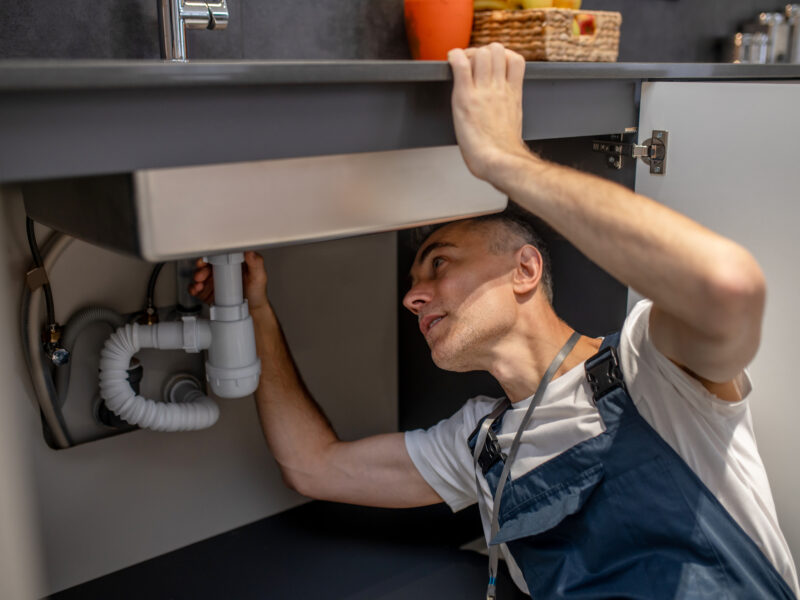Nothing is as frustrating as when you turn on the shower, ready for a nice wash, and the water just trickles out. Or when you are trying to wash dishes, and the tap barely runs? It's annoying, right? A sudden drop in water pressure is really annoying and makes simple daily jobs harder.
Sometimes, the problem is something small, like a clogged tap or a valve that isn't fully open. Other times, it might be something more serious that needs a professional plumber to sort out. Let's have a look at the common reasons why your water pressure might suddenly drop and what you can do to solve it.
What Causes Low Water Pressure?
A sudden drop in water pressure can be frustrating, but there's usually a reason behind it. Understanding the common causes can help you fix the issue faster or know when it's time to call a plumber. Here are some of the main reasons for low water pressure:
- Partially Closed Main Valve: If the main water valve isn't fully open, it can restrict the flow of water to your whole home. A quick check can sometimes solve the problem.
- Clogged Taps or Showerheads: Over time, minerals and debris can build up inside taps or showerheads, slowing down water flow. Cleaning or replacing them can bring the pressure back.
- Leaks in the Pipes: A hidden leak can reduce water pressure by letting water escape before it reaches your taps. You might also notice damp spots or a sudden increase in your water bill.
- Hot Water System Issues: If the pressure drop only happens with hot water, the problem could be in your hot water unit. Sediment build-up or valve problems are often to blame.
- Problems with the Water Supply: Sometimes, the issue isn't inside your home. Work being done on water lines or supply issues in your area can also cause low pressure. Check with your local water provider to be sure.
Simple Steps to Troubleshoot Low Water Pressure at Home
Step 1: Check Multiple Taps
The first thing you should do is check different taps around your home. Is the low pressure happening in just one tap or in all of them? If it's only one tap (like just the shower or the kitchen sink), the issue is likely with that specific fixture. But if all your taps have weak water flow, then the problem might be in your plumbing system or even the main water supply.
Step 2: Ask Your Neighbours
It is always a good idea to check with your neighbours to see if they are experiencing the same problem. Sometimes, local water supply issues can affect your whole street or building. If your neighbours have low water pressure, too, it's probably a temporary issue with the water supply. You can call your local water provider to check what's going on.
Step 3: Inspect the Main Shut-Off Valve
One common reason for low pressure is a partially closed main water valve. This valve is usually found near your water meter or inside the house where the main pipe comes in. If it's not fully open, it can reduce the flow of water to your entire home. Carefully turn it to make sure it's fully open (but don't force it if it feels stuck).
Step 4: Clean or Replace Tap Aerators and Showerheads
Over time, dirt and minerals can build up in your tap aerators and showerheads. This can block the water and lower the pressure. You can remove the aerator (the small screen at the end of the tap) and clean it using vinegar and a toothbrush. Do the same for your showerhead. A simple clean like this can usually fix the problem and bring the pressure back to normal.
Step 5: Check for Leaks
Water leaks can also cause a sudden drop in pressure. Look for damp patches on your walls, ceilings, or floors. You might also hear a hissing sound or see your water bill suddenly increase. If you find a leak, you'll need to turn off your water supply and call an emergency plumber right away to prevent further damage.
Step 6: Look Out for Pressure Regulator Problems
Some homes have a pressure-reducing valve (also called a regulator) that controls the water pressure. If this device fails, it can cause a sudden drop in pressure or even stop water flow completely. These valves usually need a plumber to test and replace them if needed.
Step 7: Call in the Professionals
If you have checked everything and still can't find the cause, it's time to call in a licensed plumber. They have the tools and knowledge to inspect your entire plumbing system. It might be a blocked pipe, a broken valve, or even old, corroded plumbing that needs replacing. For serious issues like burst pipes or complete loss of pressure, you should call a plumber immediately.
Conclusion
A sudden drop in water pressure is annoying, but in many cases, by checking a few simple things, you might be able to solve the problem on your own. But if the issue is more serious, don't wait, get help from a professional plumber to avoid damage or bigger repair costs.
Get expert help with water pressure problems with Essendon Plumbing Services. Whether you need quick hot water repairs Melbourne or any other plumbing service, our friendly team can fix the issue fast and professionally. So, if you are in trouble and need help, give us a call and get your water pressure back to normal today!


 Signs Your Plumbing System May Need an Upgrade – Expert Tips
Signs Your Plumbing System May Need an Upgrade – Expert Tips

